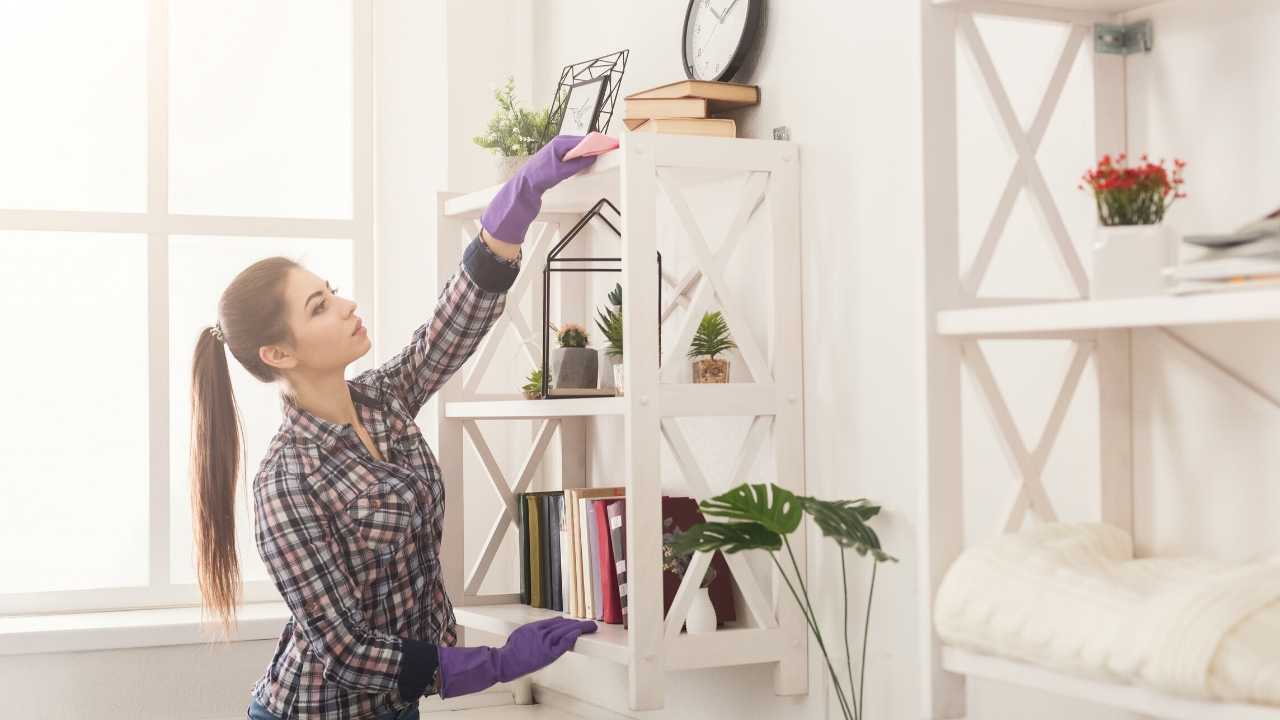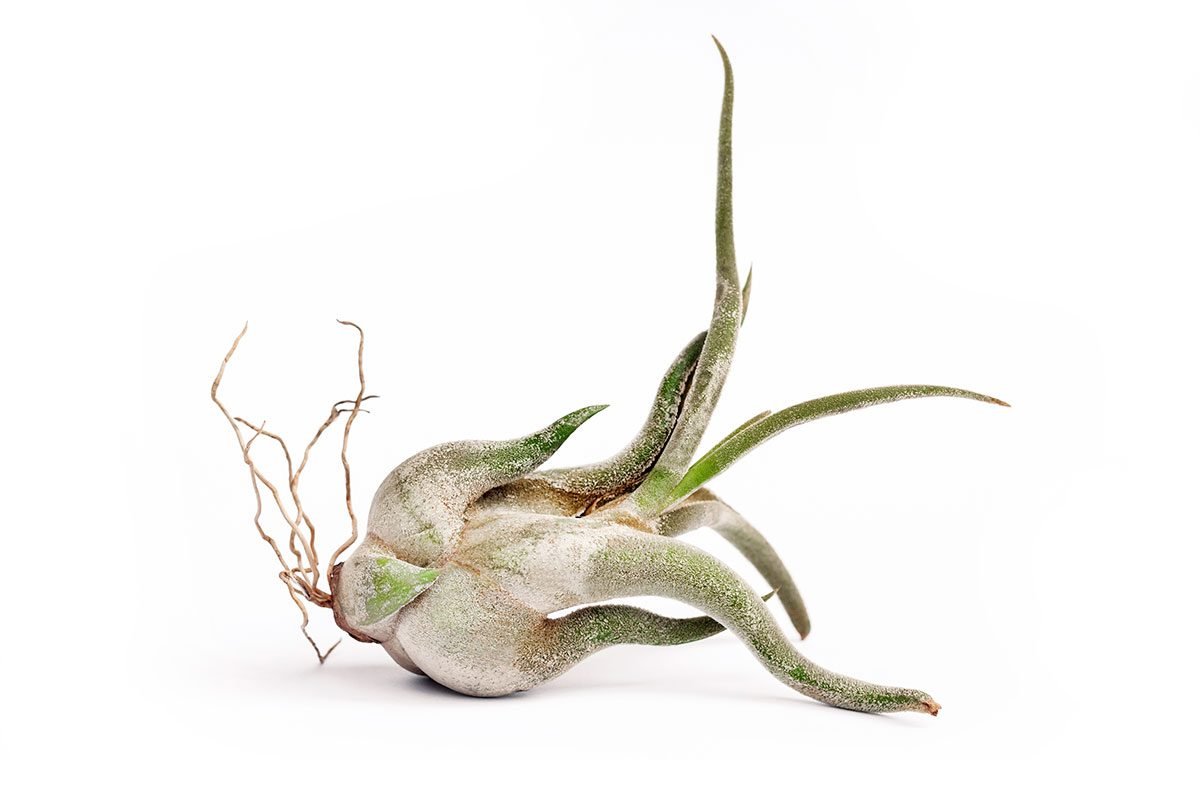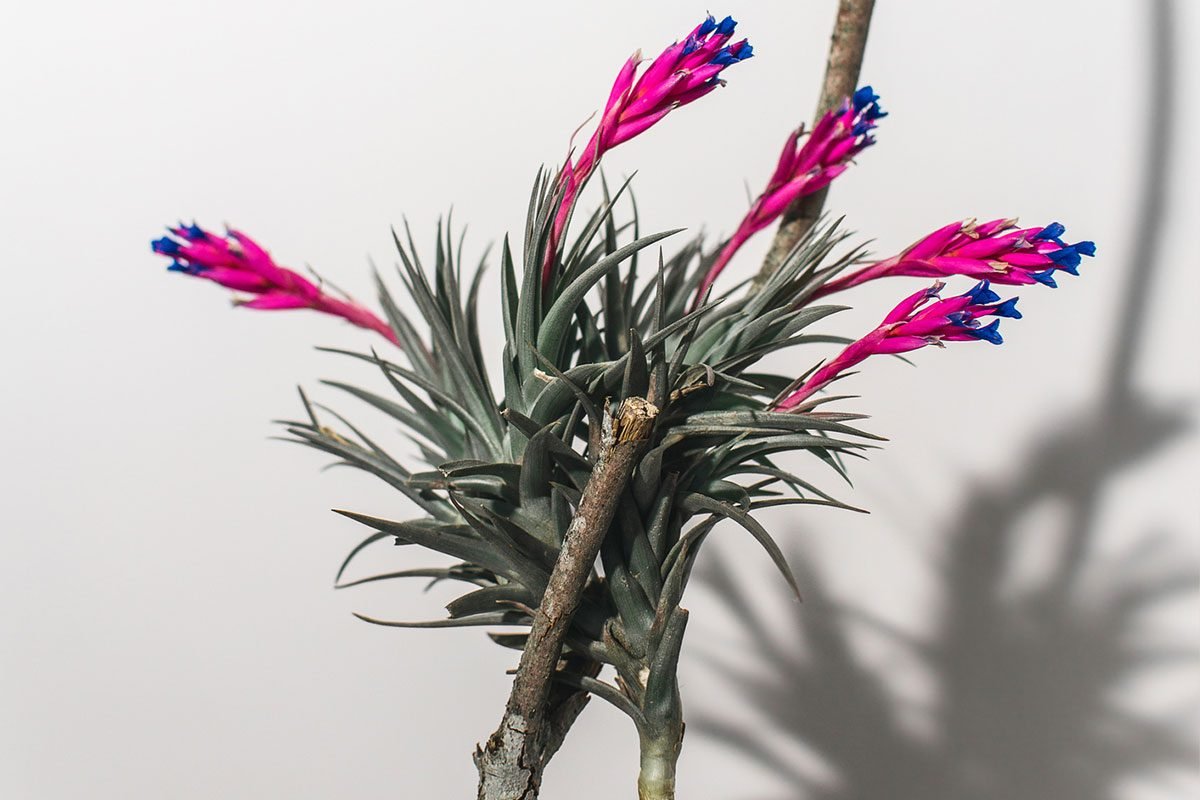Air plants don’t require soil or even containers, just a supportive spot to hang out. Relatively easy to grow and maintain, they are a great choice for those not endowed with a green thumb.
What Are Air Plants?
Air plants, or Tillandsia, grow floating in the air, where they live and thrive without soil.
- Part of the Bromeliad family, air plants are epiphytes — plants that attach themselves to other plants for support, without relying on the host to thrive.
- They absorb moisture and nutrients through their leaves, not their roots, which they use only to anchor themselves to other plants or objects.
- In the wild, they may cohabitate with a tree or find a home atop a rock. At home, air plants aren’t too picky about their lodgings as long as they get enough light and air. They’re happy taking up residence on something as small as a wine-bottle cork, inside a hanging glass orb or even sprouting from a piece of driftwood.
- With more than 600 species of various shapes, sizes, forms and colors, these resilient plants make versatile home décor accessories.
Where Do Air Plants Grow Naturally?
Most air plants are native to the West Indies, Mexico, Central America and South America, but some grow wild in California and the southern U.S. Visitors to Louisiana will see Spanish moss dripping from centuries-old live oak and bald cypress trees. (Spanish moss isn’t really moss, rather a type of Bromeliad that over the years became known as Spanish beard and tree hair.)
Best Air Plants for Beginners
These are some of the more resilient air plant species that are relatively hardy, easy to find and offer a broad range of design and display opportunities.
Best Beginner Air Plant: Ioantha

Generally one- to three-inches tall with pointed leaves, there are a few varieties of these easy-to-care-for plants. Many produce red, orange, pink or purple blooms. It prefers indirect sunlight and frequent misting.
Best Beginner Air Plant: Caput-medusa

This plant is ageotropic. That means it will grow straight whether mounted horizontally or even upside-down, so it’s suitable for many types of displays. It also tolerates less watering.
Best Beginner Air Plant: Aeranthos

This common beginner plant derives its name from the Greek “aer” for air and “anthos” for flower. A hardy plant that requires less watering, its stiff green leaves grow upward, and a purple flower eventually emerges from its pink bud. Its several varieties range in size and color.
Growing and Caring for Air Plants
It’s a common misconception that air plants receive all the water and nourishment they need from the air. Like all plants, they too need light and water, and can, in fact, perish from over or under-watering. Always consider the plant’s native environment, such as hot and dry, or humid and shady.
Unlike their soil-dependent relatives, these unique plants absorb nutrients and moisture through their leaves. Tiny scales or “hairs” on the leaves, known as trichomes, function like reservoirs that absorb water and nutrients from the atmosphere.
Air Plants and Light
While most air plants thrive in bright, indirect sunlight, some can tolerate direct light.
Watering Air Plants
In general, you should either mist air plants every few days, drenching them until dripping wet, or bathe them weekly.
To bathe, soak them in a bowl of room temperature water for six to 12 hours. Use filtered water, or tap water you’ve let sit for 24 hours to allow the chlorine to dissipate. (Do not use distilled water — that can kill the plant!)
After watering, turn plants upside down and lightly shake off the water. Then lay them on a towel in an area with plenty of light and air circulation, to help dry the leaves. Allow air plants to dry out for about four hours before placing them back in their displays.
Note: Try not to touch the plant’s leaves. Oils from your skin can clog their sensitive little trichomes.
Air Plant Blooms
Endowed with some strange attributes, these plants bloom only once in their lifetime, which signals their life cycle peak.
Right around bloom time, air plants produce offsets, the plant’s offspring or “pups.” These little babies, clones of their parent, begin as tiny nodes at the bottom of the plant. As newborns, they’re delicate, so allow them to reach at least 1/4-in. to one inch before separating them from their mother plant. Once removed, care for them just as you would the adult plant, then place and display as you like.
How To Display Air Plants
Here’s an opportunity to show off your creativity. Place air plants just about anywhere there is adequate indirect light and airflow, making sure you can reach them for regular watering. Because air plants are lightweight and soil-free, they offer practical and fun opportunities for designing interesting displays.
“Airplantman” Josh Rosen has been designing with air plants for years. He produces a line of display items, including an unusual hanging outdoor light fixture with optional misting and waterproof LED low-voltage lighting. He suggests framing air plants to hang on walls or outdoor fences to mask an unwanted view or to create an artistic focal point. The options are limited only by your imagination.
- Display them alone or mix them up and pair them with mosses, lichen and stones.
- Hang them or place them on tables, shelves or walls.
- Frame plants of contrasting sizes, colors and textures to create living paintings and lush vertical gardens.
- Place them in any variety of vessels including classic and novelty pots, bowls, trays, glass globes, terrariums and wreaths in a myriad of materials — ceramic, lightweight concrete, paper mâché, macrame, woven wire, felt and more.
- Experiment with natural materials such as wood, cork bark, rocks, seashells and even colorful minerals like dazzling amethyst crystals.
Where To Buy Air Plants
Unfortunately, the over-collection of air plants in the wild destroys their native habitat and threatens their survival. However, you can purchase sustainably grown air plants from certified growers online and at some local nurseries.
https://cats-cleaning-service-in-kentucky.business.site/?m=true
Cat's Cleaning Service 2400 Stannye Court Louisville, KY 40222 Call Us Today @ 270-823-3148 We clean a residence from the top to bottom, utilizing crevice tools and others to get in the nooks and crannies to get it Cat Clean!!!! #CleaningService #Cat'sCleaning #LouisvilleKY
https://sites.google.com/fuseologycreative.com/fuseology-creative-clients/home
Always check our latest articles at...
https://vancouver-local.com/cats-cleaning

_7.png)





